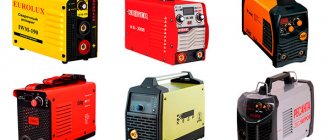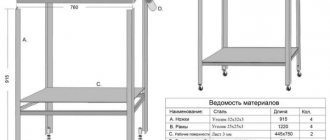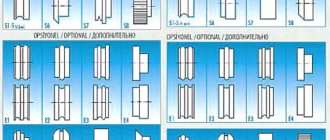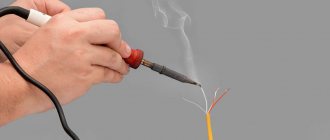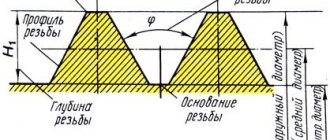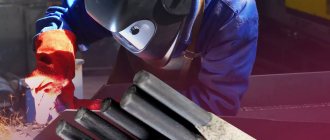Without exception, all welders working in production have a specially equipped workplace, which is also commonly called a welding station. It can be stationary or mobile and is equipped depending on the tasks assigned to the specialist.
- Stationary station equipment
- General requirements
General and individual requirements
Regardless of the type of equipment, when organizing a post, sanitary and safety standards are observed:
- To improve the quality of welding work, provide good lighting. It should be at least 80 lux, but not interfere with the master. The lamps are installed so that no shadows fall on the desktop.
- Since welding produces vapors and gases harmful to humans, sanitary standards are taken into account when creating ventilation. Thus, exhaust equipment must cover a radius of at least 4 m, the recommended air exchange rate is more than 40 m³ per hour. When organizing a post at home, standard supply and exhaust ventilation is sufficient.
- If several craftsmen work in a room, then the installation of centralized exhaust units is required, to which all stations are connected. The dampers help regulate the air exchange rate. When working in closed containers (reservoirs, tanks), air is supplied using a mask.
- When installing single-phase welding units, an oscillator is included in the circuit. For a three-phase device, the presence of a magnetic contactor is required.
- If metal cutting will be carried out at the workplace, then a separate place will be equipped for storing and using cutting equipment.
Individual requirements are provided for different types of technologies:
- When organizing a gas welding station, a separate compartment for storing cylinders is equipped. There should be no sources of heat or open flame in the work area.
- In electrical technology, attention is paid to equipment grounding. A rubber mat is placed near the welding machine. When setting up a post on the street, a canopy is built.
- When using plasma welding, equipment is provided that quickly removes toxic products of metal combustion from the working area. There should be no flammable liquids or materials in the room.
We recommend reading Methods for heating concrete using welding
Requirements for welding stations
General requirements
Requirements for the organization of welding stations are based on compliance with safety regulations and ensuring comfort in carrying out work. It is important to ensure that all energy consuming installations are grounded. To place them, it is highly advisable to make a base of concrete or brickwork. The post must have everything necessary to store not only tools, but also documentation.
Briefly about the basic requirements. Ventilation is required. The table is made of steel or cast iron. The welder must stand on a rubber mat while working.
For cases where the welder works while sitting, it is necessary to provide a special chair with a non-conductive seat. It should be durable, but light and small so that it can be moved with one hand if necessary. Naturally, the seat should be comfortable, since sometimes a specialist has to work for several hours without a break.
Productive work is impossible without adequate lighting. The brightness should not be excessive, but at the same time, even small details should be well illuminated. As practice shows, 80 Lumens are enough to work. The light source should be placed directly above the table. If this is not possible, then it is permissible to place the lighting device in close proximity to the workplace.
Even if we are talking about multi-station welding, you still need a switch, by turning which you can turn off the electricity supply in an instant. This may be needed in an emergency and to de-energize the area at the end of the working day.
Classification of posts by type of welding
The following types of jobs are distinguished:
- Gas welding stations. The room for working with such equipment is organized taking into account the technology: the melting of the metal is carried out under the influence of thermal energy released during gas combustion. The workspace is equipped with the most efficient exhaust system. The post is finished with fireproof materials.
- Electric welding. The space allocated for the welder’s work is organized taking into account the high risk of electric shock.
Workwear
Even with full compliance with safety regulations at the welder’s workplace, it is impossible to protect the welder from negative factors without the use of special clothing. The set should include a jacket, mittens, trousers, safety shoes, etc. Most workwear for welders is made from tarpaulin with asbestos in it, which can protect against molten metal. Clothing should cover the entire body so that there are no exposed areas.
Among personal protective equipment, shields and helmets are important. They must comply with GOST 12.4.035-78. The mask cannot be heavier than 0.5 kg.
Approximate cost of a welding helmet on Yandex.market
When choosing a mask, pay attention to its material. Ideally, it is plastic that is resistant to elevated temperatures and humidity. Such a mask does not deteriorate under the influence of metal splashes and prevents electric shock to the worker.
If work is carried out in cramped and enclosed spaces where it is impossible to use an exhaust hood, then you need to use special masks that provide air supply.
A light filter is inserted into the helmet, which is held by a frame with dimensions of 120*60. Protection means include 13 classes of filters with different densities, which are used for different power modes.
The use of colored glasses that are not intended for welding is prohibited, as they do not provide reliable eye protection from ultraviolet rays. This puts the welder at risk of chronic eye disease.
Modern masks are designed like a “chameleon”. They allow you to automatically adjust the darkening of the glass depending on the brightness of the arc.
Among the requirements for the material of the suit are the following:
- The material of the welder's suit is heat-resistant (for example, suede or tarpaulin).
- Pockets - only internal.
- The jacket should not be tucked in.
- Boots are made from non-flammable material , they must be high enough and must not contain nails.
- The headdress should reliably protect the neck.
- Gaiters or mittens are made from non-flammable material ; they must be long enough to prevent material from getting inside during ceiling welding.
Workplace safety
Regardless of the type of equipment used, rules must be followed to prevent fire and injury hazards. The main conditions for organizing work areas are the following:
- Each post is surrounded by protective screens made of fire-resistant materials. The screen cannot be equipped with a closed top part.
- Wall paneling should not touch the floor. It is recommended to leave a distance of 30 cm.
- When gas welding, an additional light protection screen with a height of more than 2 m is installed.
- The walls are sheathed with fireproof materials.
- It is forbidden to place several welding tables at one station. If such a need arises, install an additional light-protective screen.
LITERATURE
- PPR. Fire regulations in the Russian Federation. Decree of the Government of the Russian Federation of April 25, 2012 No. 390;
- State Committee of the Russian Federation for Construction and Housing and Communal Sector Resolution No. 80 dated July 23, 2001 On the adoption of building codes and regulations of the Russian Federation “Labor safety in construction. part 1. general requirements”;
- Ministry of Labor and Social Protection of the Russian Federation Order No. 701n dated November 28, 2013 On approval of the professional standard “WELDER”;
- SP 12-135-2003. Occupational safety in construction. Industry standard instructions on labor protection" (approved by Resolution of the State Construction Committee of the Russian Federation dated 01/08/2003 No. 2) from the "Construction" information bank;
- MDS 12-49.2009. Layouts of labor safety instructions for construction workers. Methodological manual" from the information bank "Construction".
Scheme and basic tools
The order in which equipment and fixtures are placed is dictated by the type of welding location.
For mobile post
When creating mobile workplaces, there are no special requirements for space and ventilation. However, basic safety rules should be followed:
- The trolley for placing devices and tools is equipped with wheels, ensuring ease of transportation. For work, a welding unit with a set of cables is used.
- The mobile post is equipped with stands on which a canopy is installed in case of bad weather.
- Tools are placed in special boxes.
- To protect others from light exposure, portable shields are used.
- When laying long communication lines, workplaces are equipped in trailers with autonomous generators.
For landline
When equipping a welding station in a workshop, it is necessary to purchase all the necessary equipment for the work. The list can be expanded, but when connecting metal parts you cannot do without:
- welding unit;
- a box for storing electrodes and other auxiliary tools;
- constant current source;
- convenient landing place;
- switch for supplying and disconnecting voltage;
- exhaust chamber;
- baskets, shelves and drawers for storing small tools;
- electric holder.
When placed correctly, all these devices do not take up much space.
Basic equipment
To fully equip a welding station, it is necessary to equip it with electrical equipment, additional equipment and auxiliary means:
- a current source for the formation of a welding arc, which is a welding transformer or inverter;
- current-carrying cables in a reliable braid that can withstand high current strength and constant mechanical stress.
- conductors must have appropriate fastening at the end for connection to terminals, electrode holders and ground;
- gas burners for working with gas welding equipment;
- fixtures and other tools for welding work: clamps, clamps, holders;
- welding table;
- protective equipment: heat-resistant suit, special gloves, welder’s mask, headdress with a lapel.
A distinctive feature of a mobile welding station is that it does not have any boundaries. This is explained by the fact that a specialist needs to constantly move to perform his duties within a certain area: construction site, welding shop, production site, etc.
It is worth paying attention to the fact that this classification relates exclusively to the organization of procedures, but does not in any way regulate the nature of the manipulations performed.
Features of gas welding stations
The following must be present in the work area:
- acetylene supply device;
- oxygen cylinders with a reducer;
- gas supply hoses;
- welding torches.
We recommend reading: Everything about the welding profession
When arranging a stationary gas welding station, take into account the following recommendations:
- The surface of the welding table must be metal.
- Gas cylinders are placed as far as possible from the workbench. At enterprises, gas is supplied centrally through a pipeline.
- The post is placed at a distance of at least 10 m from sources of open fire.
- When working in closed containers, additional means of air supply are installed.
Welding tables
Welding booths must be isolated from outsiders. They house a welding table and other work accessories, so they are quite spacious. The size of the cabins is 2*2 or 2*3 meters, and the height is up to 2 meters. To improve ventilation, the walls are mounted so that there is a gap of 20 cm from the floor.
Welding tables are used for welding and assembling parts. They are located inside the welding cabin at a height of 50-60 cm if the post involves welding in a sitting position, or at a height of 90 cm if the work is performed while standing.
The table area is at least one square meter. The requirement for the welder's workplace involves the use of special bolts to which the wires from the welding machine are attached. To suck dust from the welding arc, it is not allowed to place an exhaust hood, since otherwise the flow of gases and dust will pass through the welder’s respiratory tract.
There should be sockets for electrodes on the table. If the desk has a drawer, then documents and tools should be stored there. There is one more requirement: there must be a rubber mat under the welder’s feet.
If the table is equipped with local suction, it can be installed both on the table and outside the room. The fan built into the desk creates noise that reduces productivity. The optimal design for a welder's table is one with lower-side suction and installation of a fan outside the room: then dust and gas do not enter the welder's breathing zone.
Additional amenities may be provided in welding tables . For example, many welders practice stripping the end of the electrode by touching it to the surface of the table. As a result, after a certain period of time, metal growths form on the table, which interfere with the movement of products on the table and worsen its aesthetic properties. To prevent this from happening, the table surface is edged with copper plates at the edges. As a result, the table surface is not contaminated by the electrodes, since the metal does not stick to the copper.
Local lighting may be provided in the table . For welding small parts, when seams are applied around the perimeter, it is advisable to use a rotating table, which is adjustable in height with screws. This allows the parts to be raised and lowered to a comfortable position. During such work, the welder gets less tired and is less exposed to harmful emissions.
To eliminate the awkward position, you need to provide the welder with a seat that is height adjustable.
High-quality ventilation
When arranging the hood, observe the following rules:
- Install local and general ventilation systems. The first is connected to each workbench if toxic substances are released during welding. Installation of a general hood is required in all cases.
- Ventilation equipment is equipped with a filter that removes welding aerosols from the air. The equipment removes harmful substances outside the workshop.
- When welding in a gas environment, air is supplied dispersedly. When using other technologies, directional ventilation is used.
Semi-automatic welding technique
Semi-automatic welding of butt joints
Parts with a thickness of no more than 0.8-4 mm are welded without cutting edges, fixed in assembly and welding fixtures. Thin metal is welded on linings made of the same metal as the product or on copper and stainless steel removable linings. Metal with a thickness of over 4 mm can be welded either on weight or on supports.
When welding with a semi-automatic machine, thin metal is much easier to weld when in a vertical position. Welding is carried out at an angle backwards, and the torch is moved in the direction from top to bottom. At the same time, the welder can clearly see the formation of the seam and the welding zone.
For welding thick metal, it is better to use gases that increase the thermal power of the arc - helium or mixtures of helium and argon. In this case, you need to monitor the position of the burner relative to the seam. A slight deviation of the torch from the vertical can lead to non-fusion of the edges of the welded parts.
Semi-automatic welding of corner and T-joints
It is preferable to carry out corner welding when the welded parts are arranged in a boat. In this case, the output of electrode wire is increased by 10-15% compared to welding butt seams in the lower position.
Welding fillet and tee welds is complicated by poor observation of weld formation due to the torch nozzle. Distance e = 0, with a metal thickness of up to 5 mm, and e = 0.8-1.5 with a metal thickness of over 5 mm.
Welding lap joints
Welding of lap joints with a metal thickness of less than 1.5 mm is performed on a copper or steel backing in one pass.
Welding of parts with a thickness of more than 1.5 mm is carried out on weight in several passes.
Semi-automatic welding of horizontal seams
Welding of horizontal seams is carried out at a “forward angle” without transverse oscillatory movements of the torch. Metal with a thickness of more than 6 mm is welded in several passes.
Welding of parts up to 3 mm is carried out at a right angle to the torch axis relative to the welded parts, without cutting the edges.
Welding parts over 3 mm in a horizontal position is welded with the top edge grooved, and the torch is tilted relative to the top part at an angle of approximately 70º.
Welding vertical seams
It is recommended to weld vertical seams with wire with a diameter of 0.8-1.2 mm with free formation of the seam. You can use the technique of frequent short circuits or use pulsed arc sources. It is better to weld parts up to 4 mm thick using a top-down method without oscillatory movements. If you plan to weld with a one-sided seam, it is better to assemble parts with a gap.
Welding ceiling seams
Ceiling seams thicker than 6 mm are best welded in several passes. It is recommended to semi-automatically weld aluminum and its alloys at a forward angle, and weld steel, copper, titanium and other metals at a backward angle.
Organization of stations for different types of welding
Since craftsmen use several technologies, work areas are equipped differently. The basic set of tools, safety rules, and equipment grounding remain unchanged. Individual points include:
- Arrangement of the installation site for gas cylinders and a compressor during argon arc welding with non-consumable electrodes.
- The use of additional devices for supplying consumables and cutting devices in mechanized welding processes.
- Use of equipment grounding and neutralizing equipment during electric welding.
- Installation of a separate screen for a plasma installation. The height of the screen in this case should be at least 220 cm.
Welding curtains
Certification of a welder's workplace requires him to have an overlap, especially for multi-station areas. These overlaps are called welding curtains. They are made from fire-resistant fabric, which is the same as that from which workwear is made.
Curtains completely isolate the welder's workplace from strangers in order to eliminate the negative influence of the welding arc and other negative factors.
Welding curtains have the following functionality:
- They protect against ultraviolet radiation.
- Minimize the risk of fire as they provide protection from sparks and splashes.
- Prevents the negative impact of air currents on the welding zone.
- Increases the efficiency of exhaust equipment.
Approximate cost of welding curtains on Yandex.market
They are quite economical and easy to install. Curtains can be solid or striped. Solid curtains are made from a single fabric. They are made of PVC, stitched on all sides and have reinforced holes for hanging rings with a distance of 20 cm. The strip welding curtain is a separate strip with a width of 50 cm. The assembled width of the curtain is 140 cm.
Create your own post
You can organize your workspace with your own hands. When creating a mobile welding station, additional components are required to carry tools and consumables.
A stationary office does not need such devices.
Collection of tools and materials
When organizing a welder’s workspace you will need:
- Current supply devices. These include transformers or generators, often operating from a 380 V network.
- Cylinders with inert or active gas. Large capacity containers are installed at stationary posts.
- Set of fixing tools. These include vices and clamps.
- Means for pre-processing of metal parts - cold rolling and rolling devices, pipe benders.
- Inverters, semi-automatic welding machines for mobile posts.
- Electrodes, filler wire. It is recommended to purchase different types of materials.
We recommend reading Rules for welding work
How to assemble
In the process of creating a welding booth with your own hands, follow the following rules:
- The recommended length of the working area is 2 m, width – 2.5 m. The ceiling height should be at least 2 m. The upper part of the office should not be closed.
- To assemble the walls, sheet steel or plywood treated with a non-flammable composition is used.
- For preliminary preparation and welding of metal parts, a convenient welding table is organized. It can be made stationary or foldable. For assembly, profile pipes and thick steel sheets are used. Tables must be equipped with metal holders that secure the current-carrying cable and grounding wire coming from the power source.
- Containers for storing electrodes and welding wire are placed on the side of the table. Drawers are installed in which small tools and technical documentation will be stored.
- Install single or multi-station arc power sources. The first option is preferable when organizing your workspace yourself. In the second case, the use of current-carrying busbars will be required.
- Install a switch to control the welding current.
Device in stages
A welding room can be set up in a garage, at a production site, or at a technical inspection station. In this case, the following scheme of work is used:
- Choose a place. It is recommended to locate the post away from flammable liquids, materials and gases.
- Assembling the cabin. From the floor to the bottom edge of the walls, leave gaps of 5 cm for ventilation. When working with inert gases, this distance is increased to 30 cm. Ventilation meshes are installed. A tarpaulin or plastic non-flammable screen is hung at the entrance.
- Mount a table with a tabletop. Provides the ability to adjust the height of the racks and the area of the tabletop.
- Install lighting fixtures.
- The cabin walls are painted with light gray paint that absorbs ultraviolet rays. Choose paint compositions based on titanium or zinc.
- Install a forced-type exhaust system. Connect the equipment to a centralized air exchange system.
- The floor is poured with concrete. Brick can be used to form flooring.
- Install a switch for emergency shutdown of welding machines.
At the last stage, connect the equipment to power sources.
The procedure for issuing permits and permits for hot work.
It is recommended to carry out fire hazardous work during daylight hours, i.e. during the day (except for force majeure and accidents) and with the participation of specialists with special training and relevant documents (certificates, certificates, certificates) confirming their qualifications.
Previously, the head of the unit or the head of the team (shop, department, section) must prescribe an exact plan for future work, equipment must be installed in explosive areas to secure the facility, power supplies have been turned off, devices and installations that pose a threat to life and health during the work process have been stopped, and signs indicating the boundaries of dangerous zones have been installed.
All specialists associated with the work must undergo appropriate targeted training, be provided with fire protection equipment, tools must be checked, and the workplace must be prepared.
Only after all these measures have been ensured is a permit issued to carry out fire hazardous hot work.
Admission rules
According to paragraph 437 of the Fire Regulations in the Russian Federation, for carrying out hot work (fire heating of bitumen, gas and electric welding work, gas and electric cutting work, gasoline and kerosene cutting work, soldering work, cutting metal with a mechanized tool) in temporary places (except for construction sites and private households), the head of the organization or the person responsible for fire safety issues a work permit to perform hot work in the form provided in Appendix No. 4 (it is below). The permit is filled out either on a regular A4 sheet or on the company’s letterhead in two copies. One of them is transferred to the work manager, the second to the employee who is responsible for fire safety at the enterprise.
A work permit for hot work is a permit document that clearly states the facility where the work will be carried out, its name, information about the specialists receiving access to it, the persons in charge, as well as the fire safety measures taken at the workplace.
Instructions for filling out the work permit for hot work
- In the upper right part of the document the full name of the enterprise whose employees carry out hot work, as well as the structural unit to which they belong, is indicated.
- In the upper left part, information about the head of the enterprise is entered, as well as the date of registration of the permit. Here, after the final completion of the document, the director will have to sign.
- Below in the center of the line is the name of the document.
- Then, in separate paragraphs, it is written down to whom the permit was issued (i.e., the person responsible for carrying out the work), for what kind of work, as well as information about the object (here you must indicate the name of the object and its actual address).
- The fourth paragraph contains information about the performers: here you need to indicate their profession, qualifications, and the date of the last training completed. Each participant in the work must sign opposite his/her name.
The following paragraphs of the permit relate directly to the hot work being carried out .
- First you need to indicate their start and end times (hours, minutes), then the fire safety measures taken (in detail).
- Further, it should be noted that hot work, as well as measures taken to ensure fire safety, have been agreed upon with the responsible services of the facility - here it is necessary to indicate a specific person, his position, surname, initials, and the date of approval.
- Finally, in the last paragraph of this part of the work permit, we similarly note the employee responsible for preparing the workplace for the implementation of assigned labor tasks.
- According to the rules, a work permit must be issued for all types of work separately for one day shift.
- If the work is not completed within the period established by the permit, then in paragraph 9 you need to make an entry indicating until what time they are extended (but not more than for one work shift). The next paragraph should include a note about agreeing to extend the permit for hot work.
- If changes are made to the composition of the performing team (some workers are replaced by others, or someone is simply excluded or added), this should be noted in a special table.
- After all the work is completed, the fact of completion of the work, the date and time are recorded, and the signature of the person in charge is affixed. After final registration, the work permit is submitted to the head of the enterprise for approval and signature.

